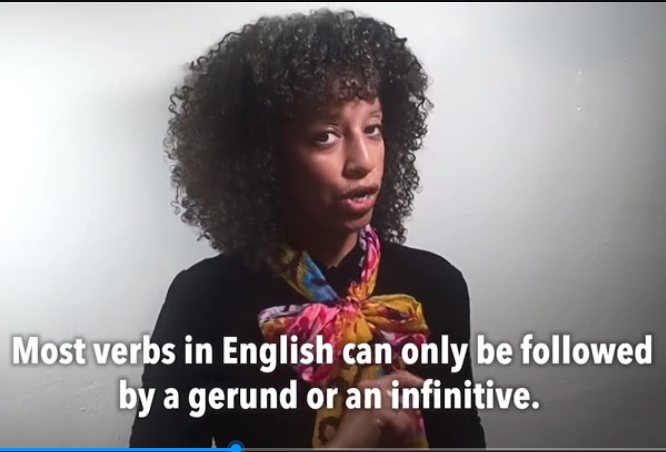This is Everyday Grammar.
这里是《每日语法》节目。
And let me try telling you something really cool about gerunds and infinitives.
让我试着告诉你们一些关于动名词和不定式的很酷的知识。
In English, we sometimes follow a verb with another action.
在英语中,我们有时在动词后面加另一个动作。
When we do this, we must use an infinitive or a gerund.
当我们这样做时,我们必须使用不定式或动名词。
For example, I said "let me try telling you".
例如,我说的“让我试着告诉你”。
Notice the verb "try" is followed by the gerund "telling".
注意动词“try”后面跟着动名词“telling”。
You may remember that a gerund is a verb form that ends in i-n-g and acts as a noun.
你可能还记得,动名词是一种动词形式,以i-n-g结尾,起名词的作用。
An infinitive is the shortest verb form and usually has the word "to" in front of it.
不定式是最短的动词形式,通常前面有“to”。

Most verbs in English can only be followed by a gerund or an infinitive.
英语中的大多数动词后只能跟动名词或不定式。
But a small group of verbs can be followed by either.
但有一小部分动词后跟两者中的哪一种形式都可以。
For these verbs, the meaning changes depending on which you use.
对于这些动词来说,它的意思随使用的动词形式而变化。
Let's look at the verb "try" and I'll show you what I mean.
让我们看看动词“try”,我来告诉你我的意思。
The verb "try" can be followed by an infinitive or a gerund and the meaning changes a little with each.
动词“try”后可以跟不定式或动名词,两者之间的意思会有一些小的变化。
When you try to do something, it means you make an effort but the action is difficult or impossible.
当你尽力做某事时,意思是你努力了,但是做这件事是困难的或不可能的。
Take a look at this example.
看看这个例子。
I tried to lift that box, but it was too heavy. Can you help me?
我想举起那个箱子,但它太重了。你能帮我吗?
Lifting a heavy object is often difficult.
举起重物常常是困难的。
But when you try doing something, it means you are experimenting with an action to find out if it works as in this example.
但是当你尝试做某事时,意味着你正在尝试去做这件事看能否成功,就像下面这个例子。
My back hurts. I tried taking pain medicine, but it's not helping.
我后背疼。我试过吃止痛药,但是没用。
The action itself isn't difficult, but may or may not have the desired result.
这个行为本身并不困难,但不能确定预期的结果。
With "try" there are a few exceptions to the change in meaning rule, but we'll talk about that in another lesson.
对于“try”,也有一些例外,我们将在另一堂课中讨论。
And that's Everyday Grammar.
以上就是今天的《每日语法》。












